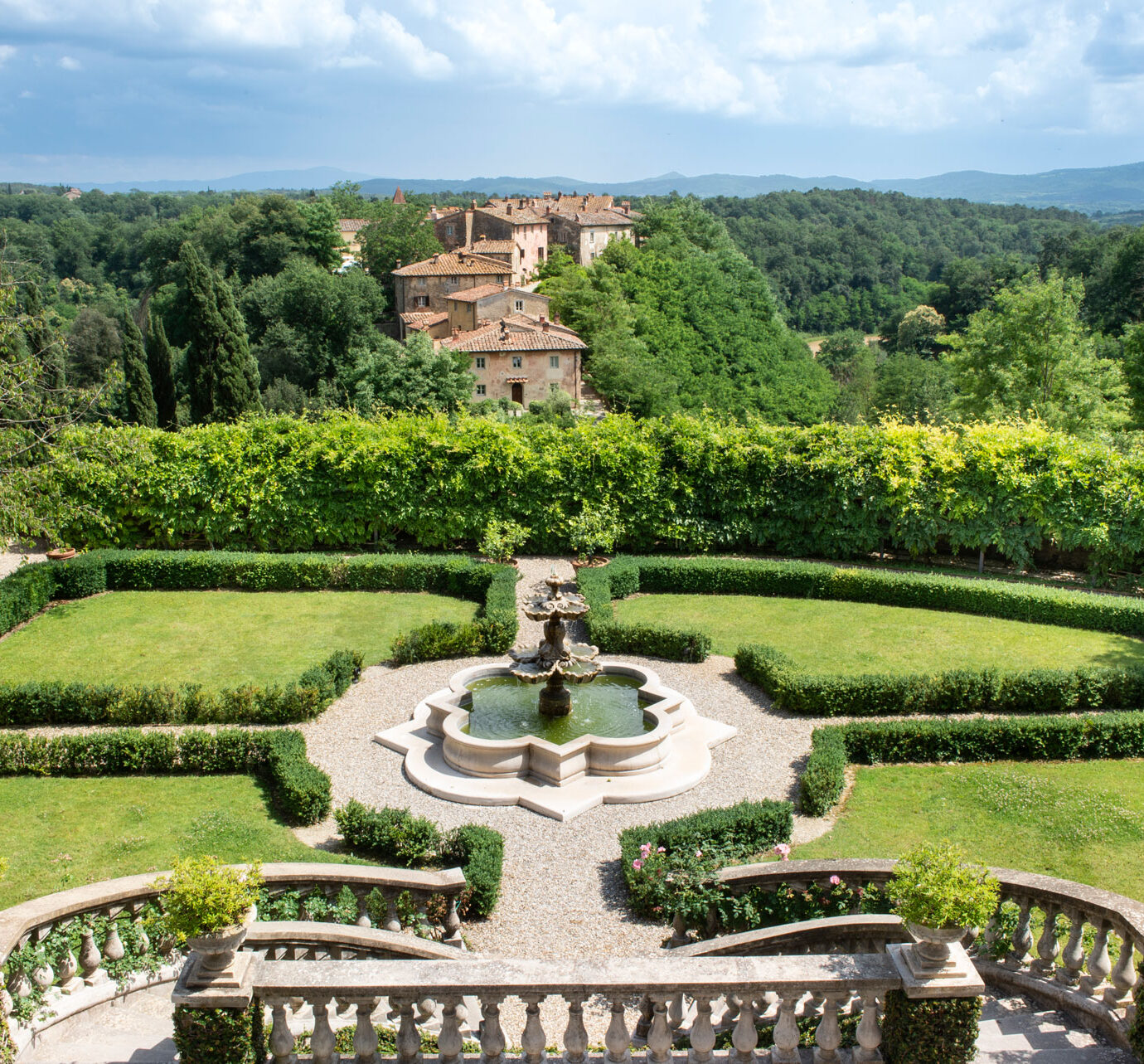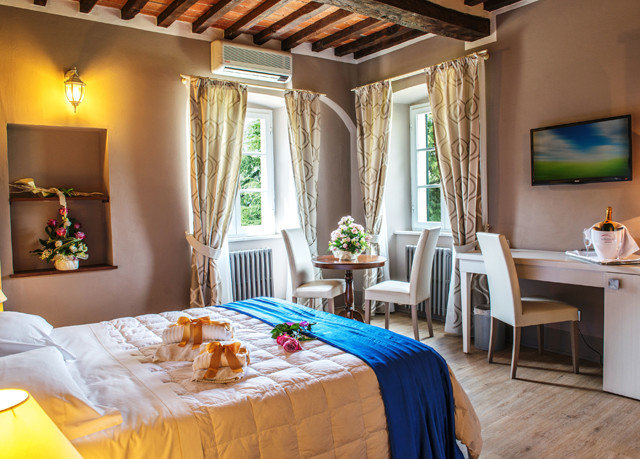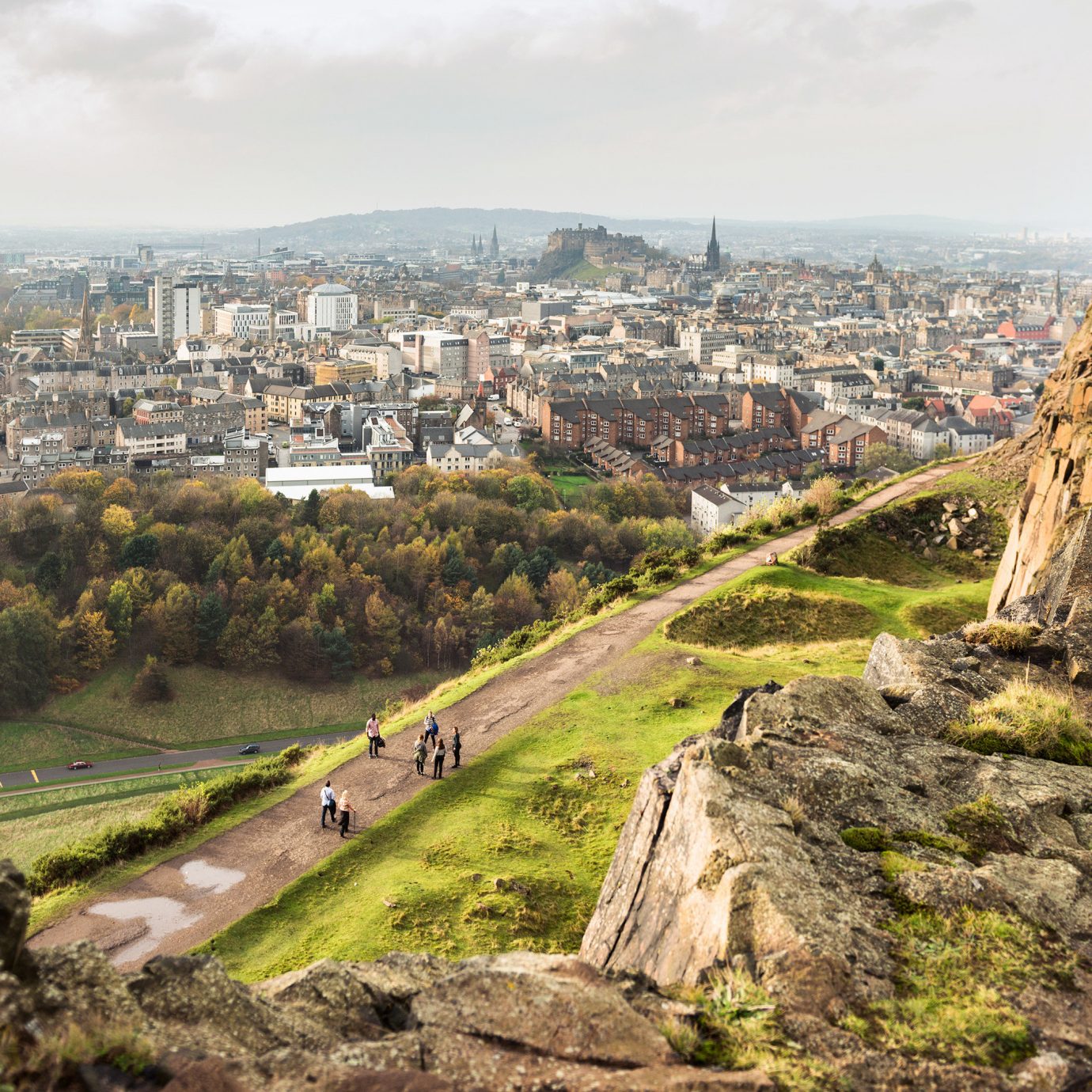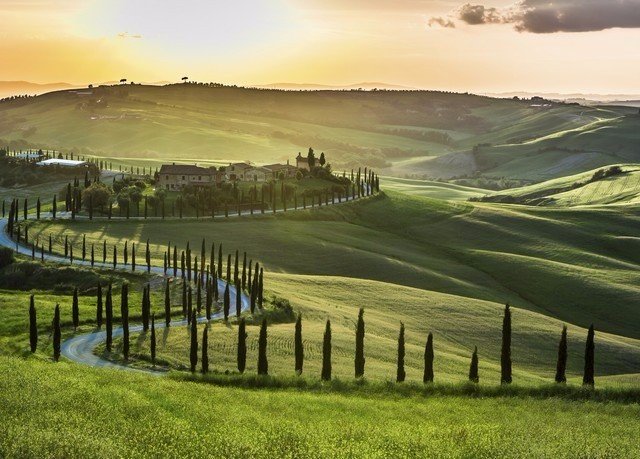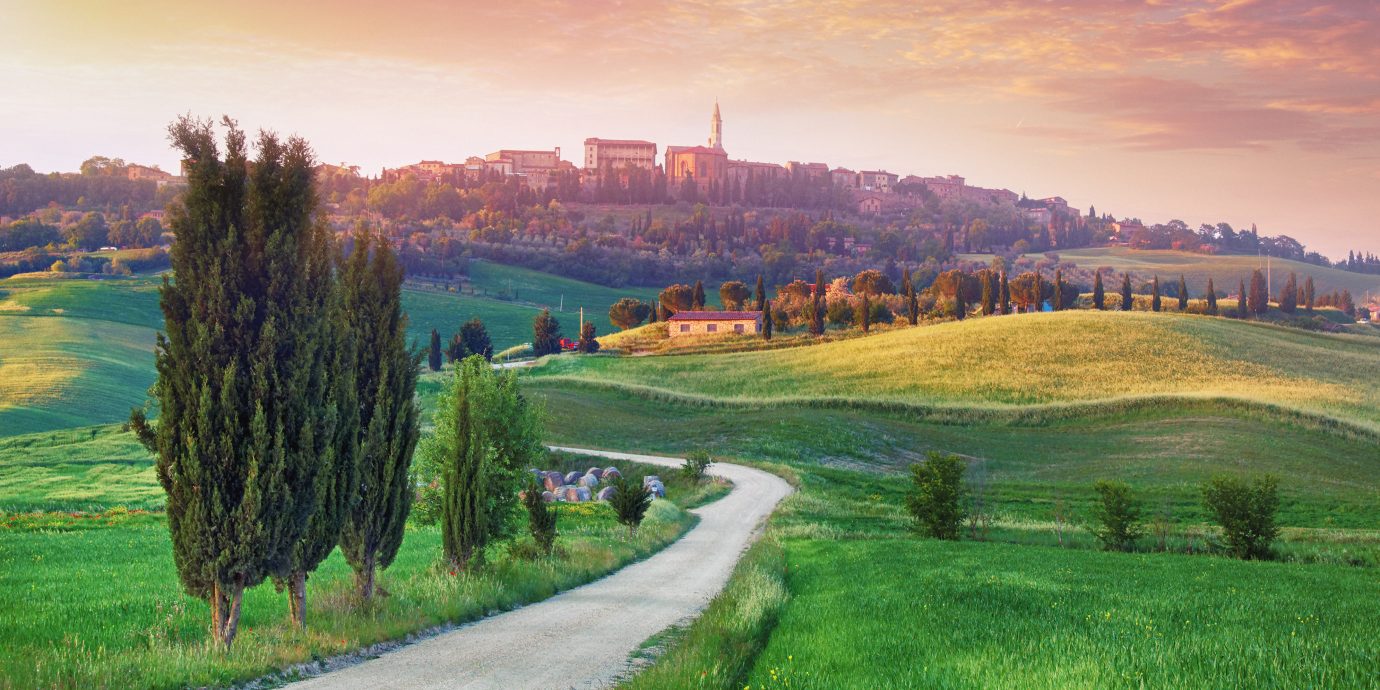
These 9 Hilltop Towns in Tuscany Are What Dreams Are Made Of
It doesn't get more postcard-perfect than the rolling fields of Tuscany, where a clutch of dreamy hilltop towns have made their way onto travel bucket lists the world over. Here, nine villages whose beauty and charm are even better than their photographs.
Senior Editor, Jetsetter | @lindseytravels | lindseytravels.com
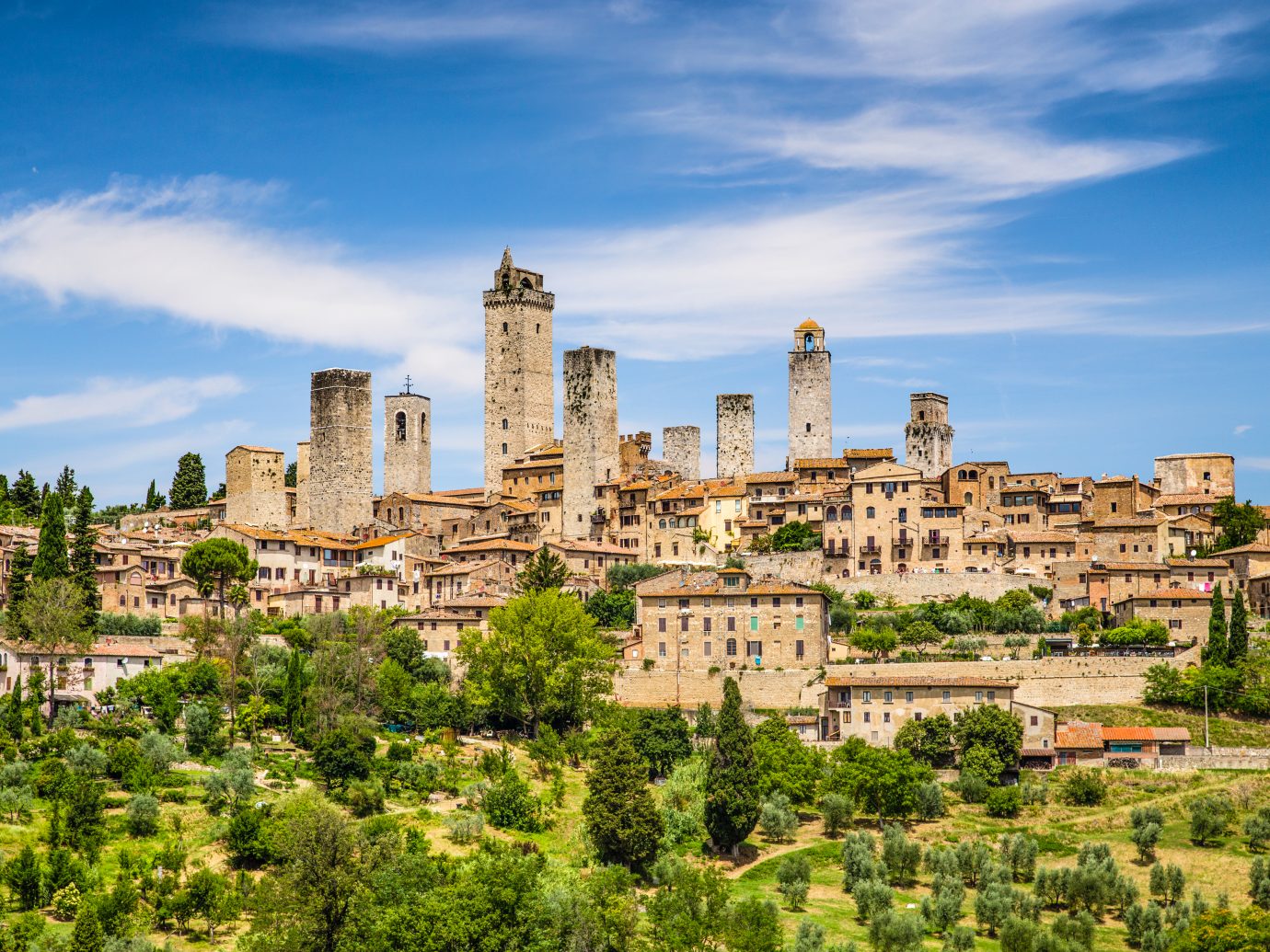
San Gimignano
With its tower-filled skyline and well-preserved medieval buildings that earned it a UNESCO World Heritage designation, San Gimignano is one of Tuscany’s most beautiful hilltop towns (as well as its most famous). If you think its 14 standing towers are impressive, however, wait until you hear the whole story: back during ancient times, rival families built taller and taller towers as a sign of their personal wealth. At one time, there were as many as 72 towers in town, which pilgrims could spot from miles away. Today, the 14 that still stand share their streets with the 15th-century Church of Sant’Agostino and 12th-century Collegiate Church of Santa Maria Assunta—both known for their ancient frescoes—as well as one of Italy’s best artisanal ice cream shops (go for the rosemary or lavender).
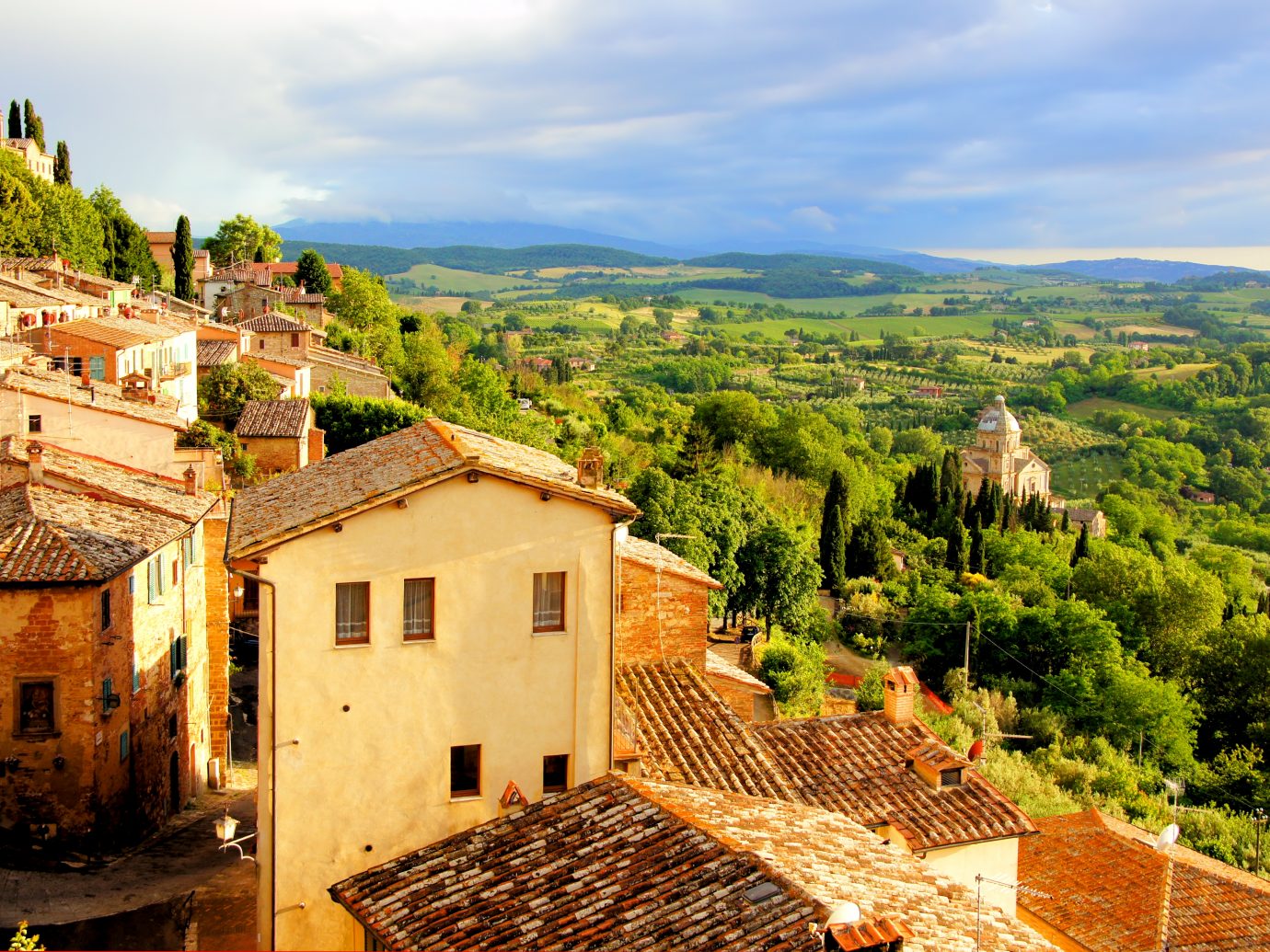
Montepulciano
The limestone hill town of Montepulciano, outside Pienza, might be best known for its local red wine of the same name, a full-bodied vintage produced in the countless vineyards that surround it. You’ll certainly earn yourself a glass (or two) after making the steep hike up to Piazza Grande, whose Renaissance-era buildings are a beautiful mashup of marble, travertine, red brick, and terracotta. The Palazzo Comunale (the town hall) is one of the most striking, with a Gothic façade and central tower modeled by Medici architect Michelozzo—as well as the Fortezza, a fortress and former school turned cultural center and wine bar, where you can enjoy said glass (or two).
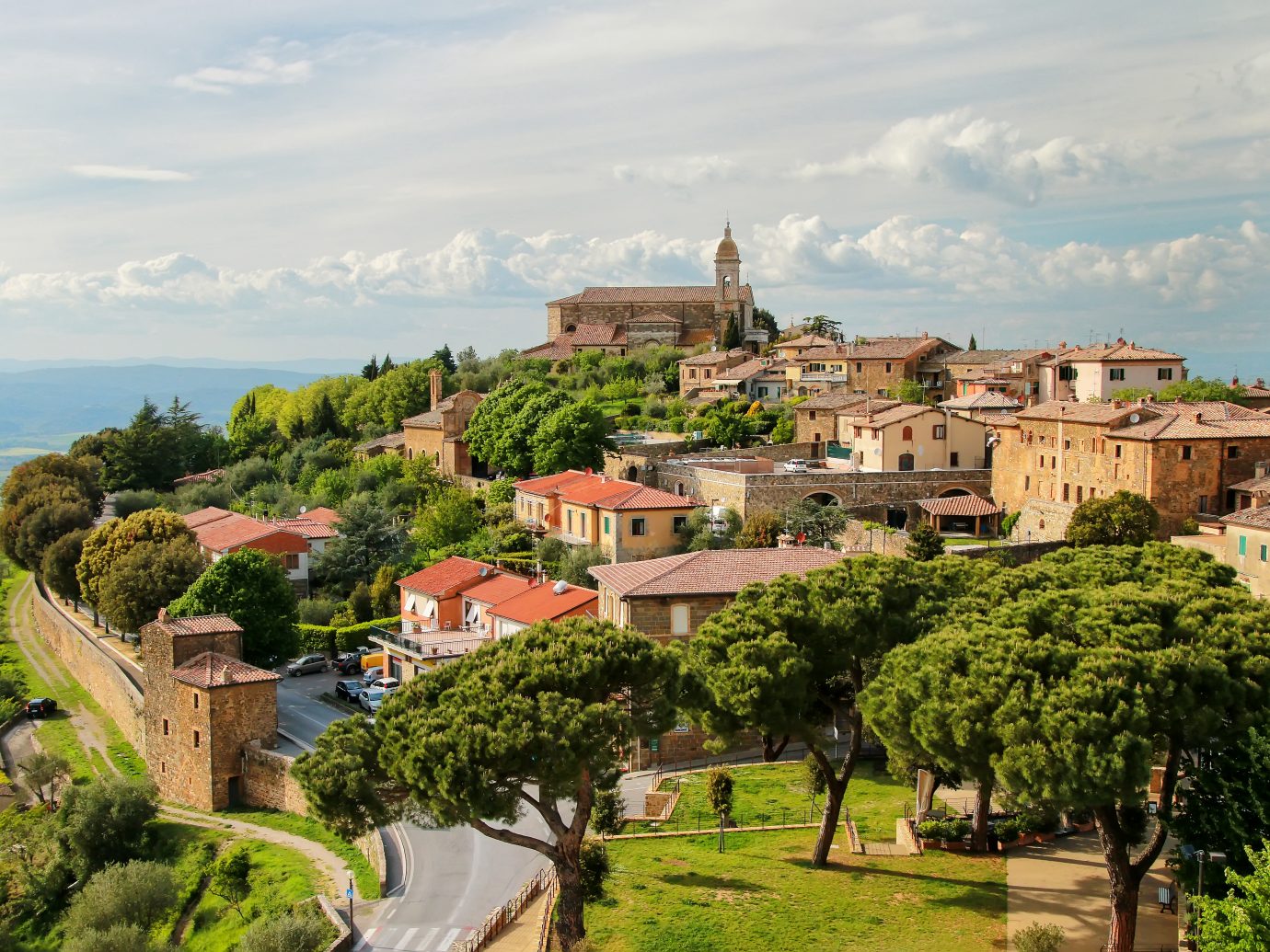
Montalcino
The 13th-century walls that once defended Montalcino from invaders also hid it (it might be assumed) from travelers as well. It wasn’t until a few decades ago—when Brunello, the town’s signature wine, hit the market—that Montalcino began raking in visitors. Today, it’s a mecca for red wine lovers, who come to sip and dine at its scenic wine estates (Castello Banfi, Le Potazzine, and Poggio Antico are three favorites for their pairing menus and outdoor restaurants.) Another advantage to flying off the radar for this long? The resident 14th-century castle, sequestered among the region’s olive groves, is almost perfectly preserved. After a tour, bed down at the restored Castello di Velona, whose thermal spa and pool overlook the Val d’Orcia.
Explore More: See hotel details | See all Castelnuovo dell'Abate, Italy hotels
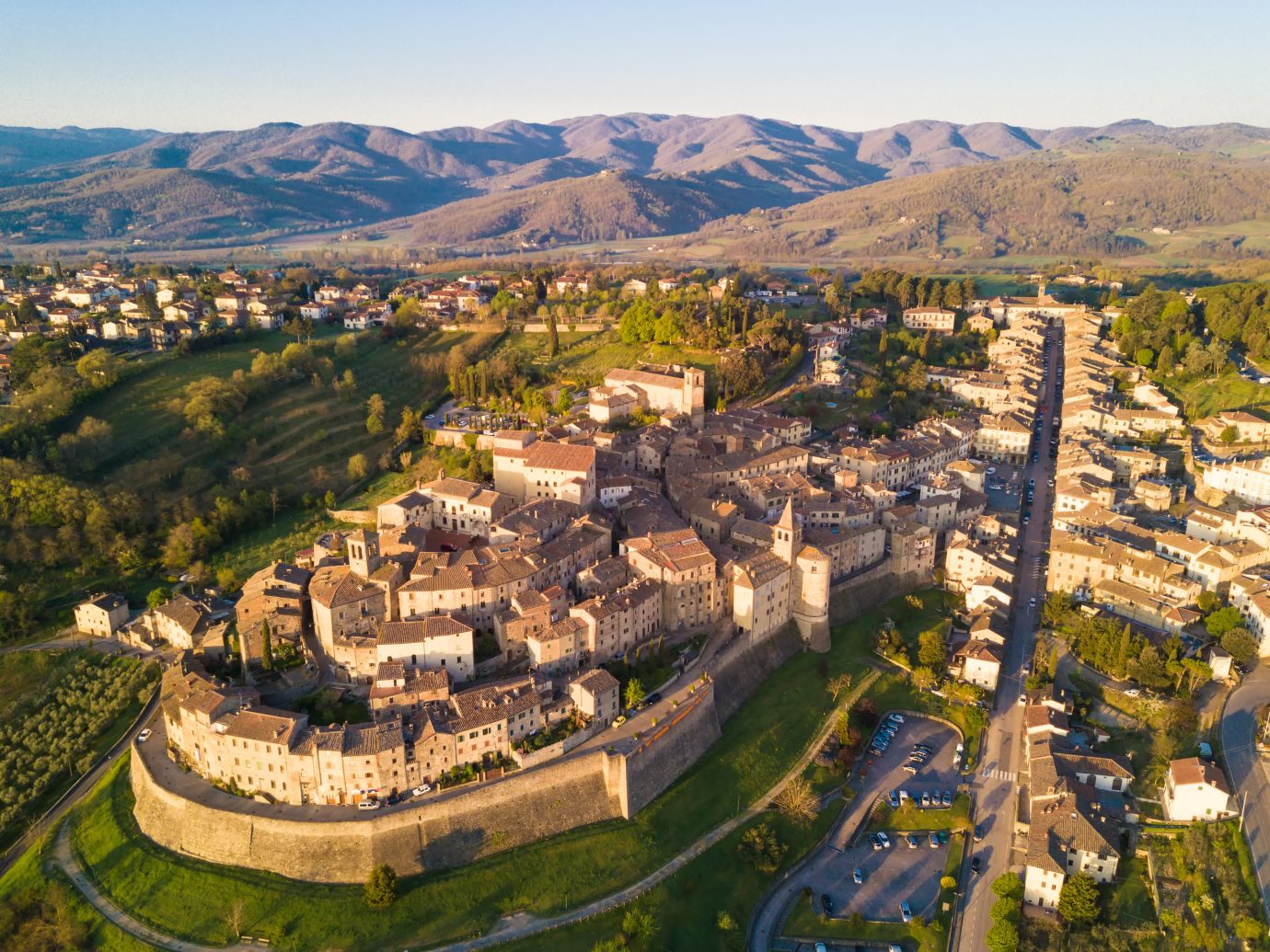
Anghiari
Leonardo da Vinci's 1505 painting "The Battle of Anghiari " might be lost forever, but the town it was based on still stands. In 1440, the armies of Milan and the Republic of Florence came together in Anghiari during the Wars in Lombardy, resulting in a victory for the Florentines for control of central Italy. Despite "The Lost Leonardo" (as the painting is often called), a visit to this hilltop town keeps its memory alive. Check out the many antiques shops and palazzi, and don't miss a chance to taste the local dish, bringoli—a thick, hand-rolled pasta served with meat or mushroom sauce.
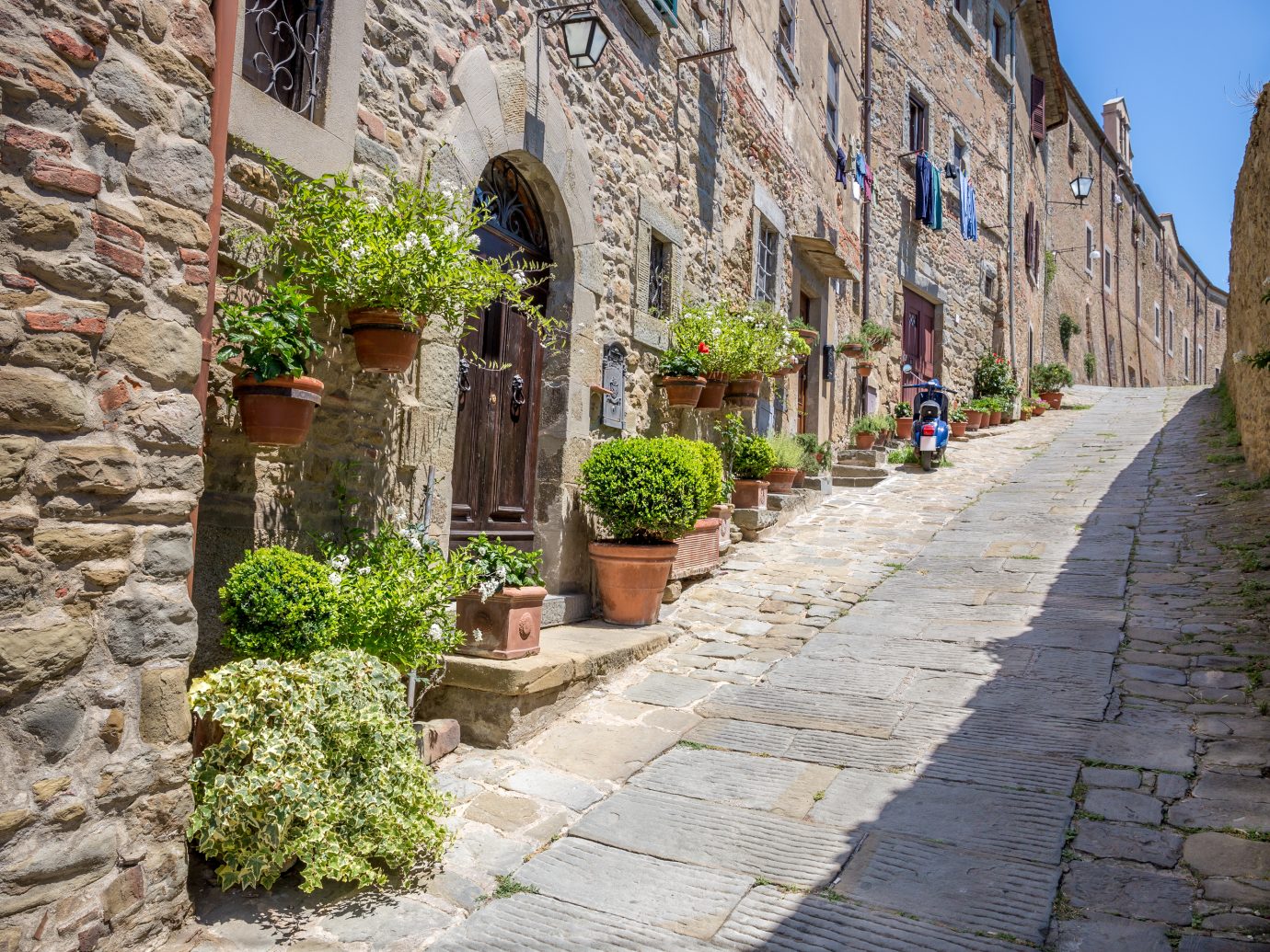
Cortona
While “Under the Tuscan Sun” was filmed across many picturesque towns in Tuscany, the memoir it was based on took place solely in Cortona. The town itself is small, but its charm is vast—think connected stone houses with flower boxes in their windows and steep, narrow lanes that wind their way up and down the hilltop, affording sweeping views of Lake Trasimeno and the surrounding fields and valleys. In for the weekend? After perusing the Diocesan Museum or the Etruscan Academy Museum, check out the pop-up markets peddling wine and meat sandwiches.
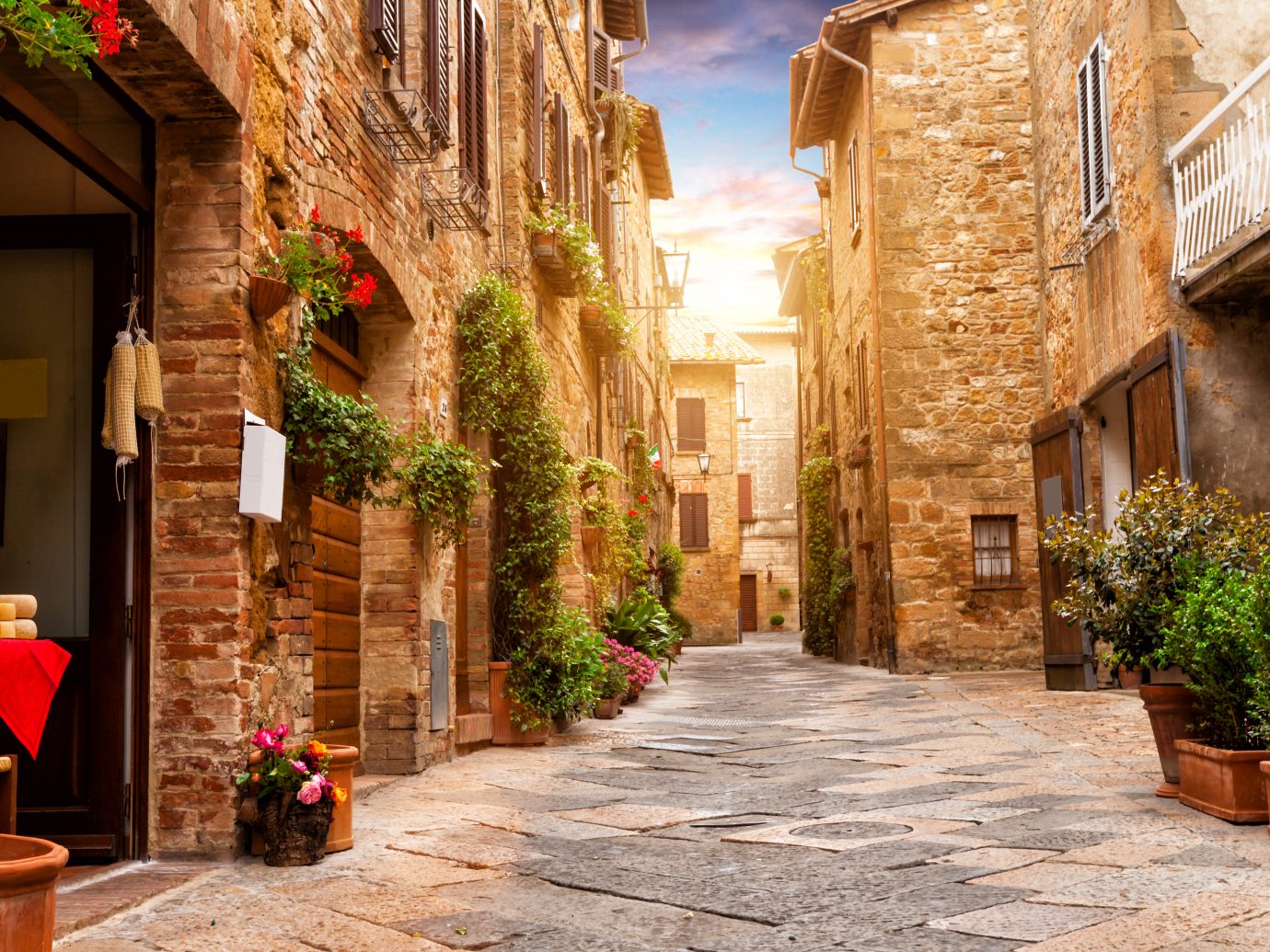
Pienza
During the 15th century, Pope Pius II had the entirety of Pienza rebuilt to fit his fantasy of what a perfect Renaissance town could—and should—be. The fruits of his labor still stand today, seen best at the trapezoidal main piazza, which is fronted by the Duomo and a host of regal palazzos (one of which features an enclosed Italian Renaissance garden with panoramic views). Scenes from The English Patient were filmed here, though the town’s biggest claim to fame is its production of Pecorino di Pienza, a type of sheep’s milk cheese special to the area. The place to stay continues to be La Bandita Townhouse, a design-forward sleep with just 12 rooms, a farm-to-table restaurant, and a library stocked with records.
Explore More: See hotel details | See all Pienza, Italy hotels
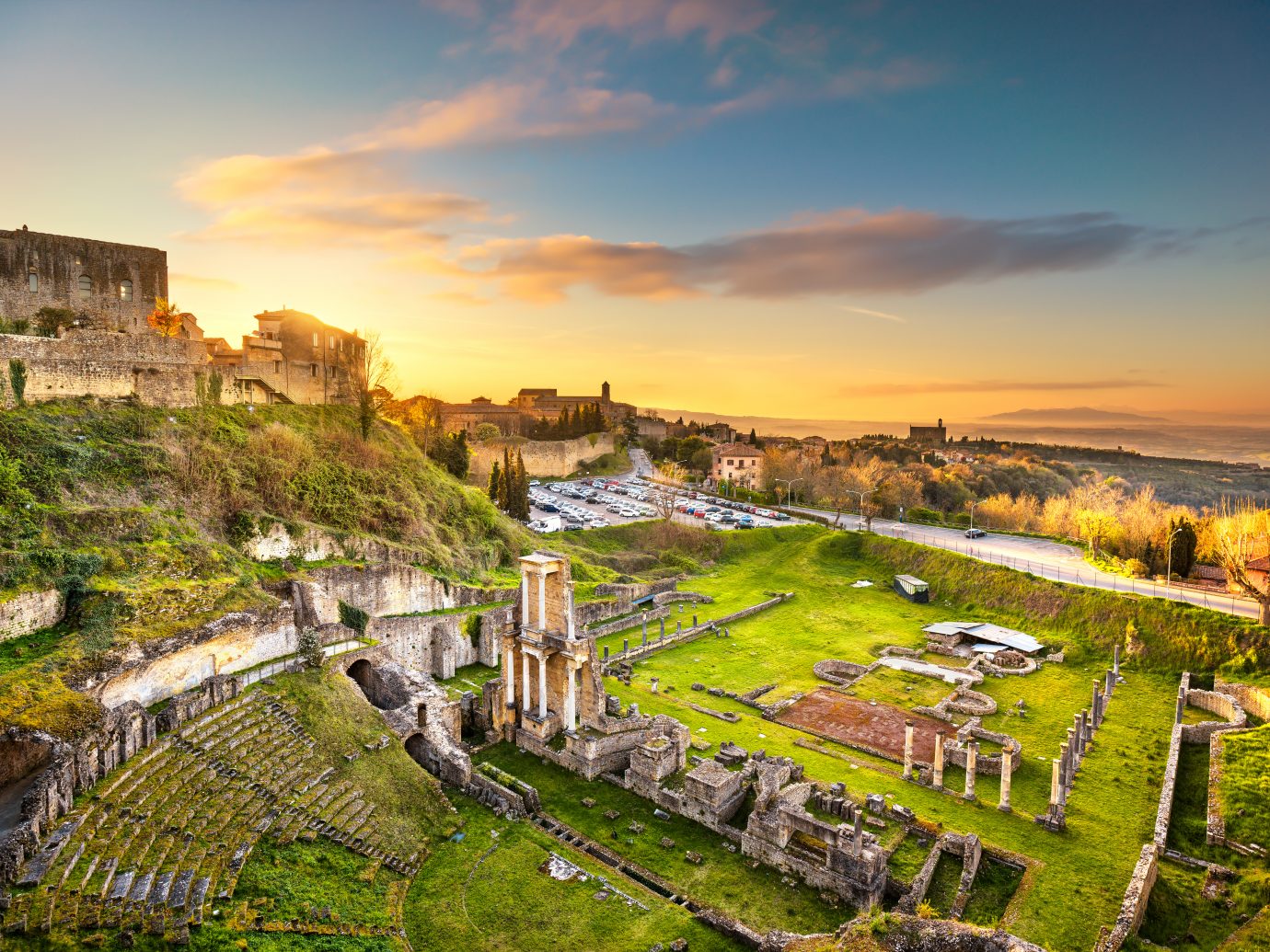
Volterra
Volterra was the last Etruscan stronghold to fall to the Romans, way back at the end of the 3rd century BC, but the town is still very much a meeting of both cultures. You’ll see remnants of their legacies in the many basilicas and gateways that survive along the walls, as well as a crumbling Roman amphitheater and bath complex, the remains of the Etruscan Acropolis, a Medicean fortress, and the Guarnacci Etruscan Museum, which houses artifacts ranging from bronze statues to funeral urns dating back to Archaic Greece. Want to take a piece of Volterra home? Objects made of alabaster stone—which has been famously mined here since Etruscan times—are sold almost everywhere and make for a great souvenir.
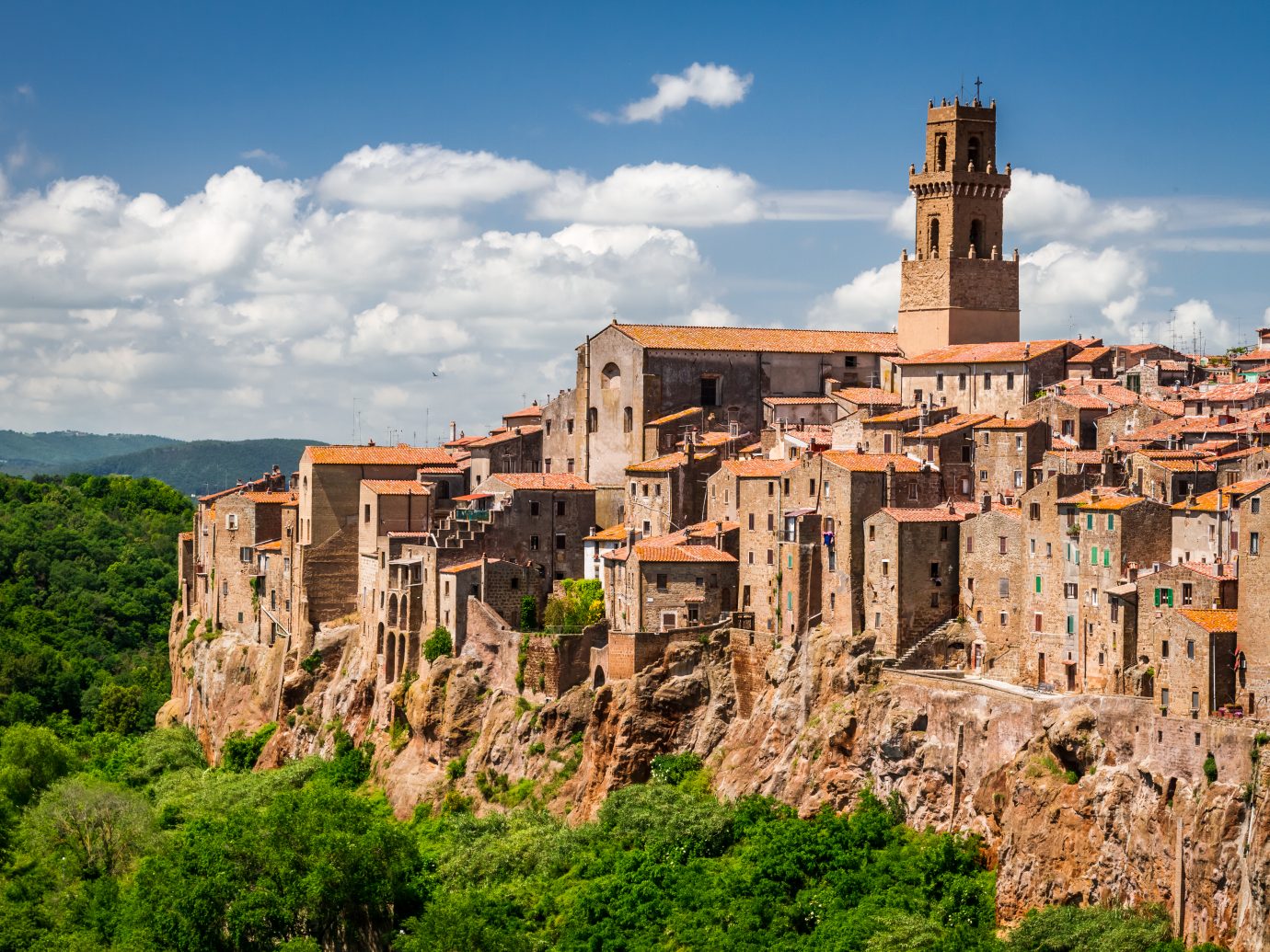
Pitigliano
Pitigliano owes its reputation to the Etruscans, who took it upon themselves to carve this picture-perfect village out of the very edges of a rocky bluff in Maremma. The buildings take on the same red-orange hue as the volcanic “tufa” stone they occupy and almost seem unreal, like they came from the imagination of a painter. A prevalent Jewish community built many synagogues in Pitigliano, earning it the nickname “Little Jerusalem”—and you can still get a taste of their history by visiting the former ghetto and getting a taste of local “sfratti.” Another famous feature in town is the underground system of caves and tunnels, which originated in Etruscan times.
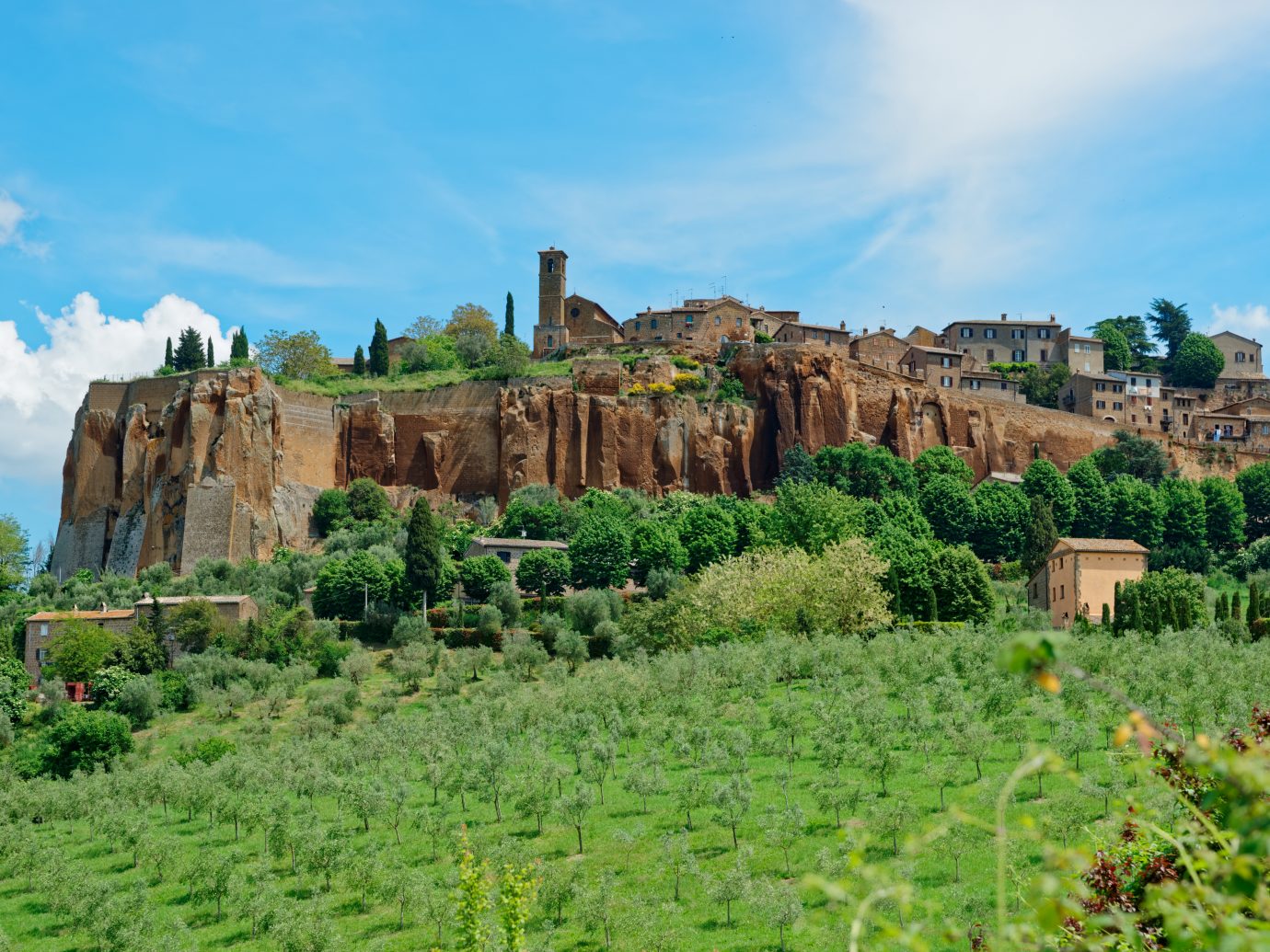
Orvieto
No matter how many medieval villages we visit, they never seem to get old. Such is the case for Umbria’s Orvieto, whose cobbled alleyways, storied piazzas, and historic churches are as beautiful as any you’ll find in Tuscany. The Etruscans first built the town walls to keep out enemies; today, the many caves and grottos left behind (once used to store wine or people, during more violent times) are now available to tour. After dropping your bags at Relais Borgo San Faustino, a tranquil farm retreat, make a beeline to two of the town's biggest highlights—the 16th-century Pozzo di San Patrizio well and the Duomo, which took more than 300 years to build and features beautiful details including a rose window and a mosaic façade.
Explore More: See hotel details | See all Orvieto, Italy hotels
Want more?
- 24 Most Beautiful Places in the World to Add to Your Bucket List
- The 9 Caribbean Islands You Need to Visit in 2019
- 15 Stunning Places Where You Can Sleep in Nature
Comments
All products are independently selected by our writers and editors. If you buy something through our links, Jetsetter may earn an affiliate commission.
Become a Jetsetter.
Use our insider connections to know where to go and what to do.
By proceeding, you agree to our Privacy Policy and Terms of Use.
Thanks for Signing Up!

